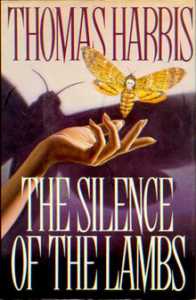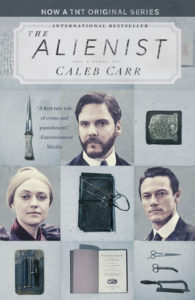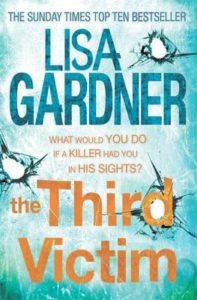The profiler holds a special place in the crime world. From icons like Will Graham and Clarice Starling to today’s newest iterations, Holden Ford and Bill Tench, the outcast, trailblazing duo depicted in David Fincher’s Netflix hit, Mindhunter, we can’t seem to get enough of these psychology-obsessed law enforcement officers, the ones who help chase down killers by devising psychological profiles of killers based on observation, experience, data, and insight. These are the men and women who wade into their own private hells in order to come back with some insight into the evil among us. From the outside, it seems almost like magic, but with a whiff of science. Nearly as soon as the job existed in the real world, it was depicted in fiction. The profiler was custom-made for crime novels and thrillers: a character whose very purpose is to penetrate others’ psyches, whose mind begins to operate like theirs, and whose work is always a matter of life or death. Readers and viewers have been endlessly fascinated by their work and gripped by their stories. The concepts used by profilers have been around at least since the time of Poe, but modern authors have added to the rigors of the discipline and explored the vocation in innovative, and often unsettling ways. With Mindhunter returning this week, we’re taking a look at some of the most thought-provoking profilers in fiction.

Thomas Harris, Red Dragon (1981)
With Hannibal Lecter so firmly entrenched in our collective imaginations, it’s easy to gloss over the genuine terror of his first appearance in the pages of Harris’s classic, Red Dragon. Not only did Harris create a new archetype of evil, he also made the mould for the psychopath’s hunter: the FBI profiler. Will Graham is the savant of the FBI profiling unit, temporarily out in the cold but pulled back in to put his total image recall and uncanny instincts to use in the search for a serial killer who fancies himself the incarnation of Blake’s mythical beast, and who is in some kind of cahoots with Graham’s old nemesis, Lecter. Before Red Dragon, there were serial killer novels, but this was a seismic shift still felt today: a dark turn toward modern serial killer literature, where psychopathy, pathology, and religion get all mixed up and the hero always into a very particular kind of hell.

Thomas Harris, The Silence of the Lambs (1988)
Harris’ follow-up is even more chilling, with the introduction of Clarice Starling. (Just try saying that name without a chill running down your spine.) Starling is a Quantico trainee, which makes Jack Crawford’s decision (Crawford is the head of the FBI’s Behavioral Science Unit, modeled on John E. Douglas) to send her in for an interview with the notorious Dr. Lecter unfathomable, but anyway it’s what gets the action going. Starling, trained in psychology among other disciplines, holds her own with Lecter, and more than that, they intrigue one another. If The Silence of the Lambs is even more haunting than Red Dragon, it’s this dynamic that achieves it—not just good versus evil, but evil’s insatiable appetite for innocence. Once again, Harris set out several layers of serial killer investigations and FBI profiling, but Lecter and Clarice are the story’s heart. (Better not to make any anatomical references with this series, but there you are.)

Caleb Carr, The Alienist (1994)
Set in 1896, Carr’s novel looks at the earliest days of criminal pathology, as Dr. Laszlo Kreizler is summoned by his old Harvard friend, police commissioner Teddy Roosevelt, and asked to investigate the murder of an immigrant boy who was working as a prostitute on the Lower East Side. Kreizler is joined by John Schuyler Moore, one of the city’s new crime reporters, as well as a crew of progressive cops plucked out from the slow-footed NYPD bureaucracy. Carr’s bona fides as an historian are beyond reproach and put to great use in creating both the atmosphere and the particulars of turn-of-the-century New York City, where the old powers sought to keep the city’s immigrant population in line and cordoned off in the tenement halls, taverns, and brothels of the Lower East Side. The details of the crime are powerfully laid out, but the book’s most compelling exploration is of the intellectual history that first introduced rigor and scientific thinking to the age-old quest of catching a murderer.

Val McDermid, The Mermaids Singing (1995)
The Mermaids Singing, McDermid’s 1995 novel, was something of a departure from the author’s free-wheeling Manchester PI series; it also marked the introduction of Dr. Tony Hill, McDermid’s famed profiler, a forensic psychologist on staff at the UK’s Home Office. Hill has a slew of his own issues—a neurological disorder, sexual hangups, trouble socializing, among many others–but he also has a knack for figuring out the motives and intentions of some pretty gruesome killers. The Mermaids Singing lays out Dr. Hill’s his first field assignment: a serial killer in a northern English city, a string of bodies left in areas of town frequented by the LGBTQ community. McDermid brings the reader so close into the killer’s thinking you can’t help but recoil, but she also has, with Hill, one of the most memorable profilers in recent crime fiction.

John Connolly, Every Dead Thing (1999)
Connolly’s 1999 debut is a bit of an outlier here—more a PI-noir than a profiler story. But the dark insight into the criminal mind is there all the same. Charlie “Bird” Parker (yes, that’s his name, what of it?) is an NYPD washout haunted by the grisly murder of his wife and child. The force brings him in on a missing persons case, and eventually he’s teamed up with Rachel Wolfe, the psychologist tasked with piecing together the killer’s profile. The real novelty here is the story’s openness to the paranormal–fortune telling, signs, premonitions. Connelly is too skilled a writer to explain the mysteries fully. Instead, he lets them deepen and complicate his characters’ pursuit of “The Traveling Man,” in what becomes a strange and and chilling mix of hardboiled crime writing and gothic horror.

Tami Hoag, Ashes to Ashes (1999)
It takes strong stuff to read Tami Hoag’s work—the violence is extreme, detailed, chilling to consider, and almost always targeted at women. But if you can handle the material, among her best is Ashes to Ashes, which pairs up Kate Conlan, a former FBI agent turned victim-witness advocate, with the bureau’s ace profiler, John Quinn, who also happens to be her ex-husband, the man she moved halfway across the country to get away from. The story focuses on a string of Minneapolis murders—mutilated bodies left in the parks. The dynamic between Conlan and Quinn, who navigate their own spoiled relationship while trying to get inside the killer’s head, is the novel’s most interesting feature, along with Hoag’s exploration of the role of victim-witness advocate, a job that’s gone under-appreciated and under-represented in the world of crime fiction.

Boris Starling, Messiah (1999)
In Starling’s debut, DCI Red Metcalfe, a Scotland Yard profiler, is sent out to investigate the murder of a London chef found hanging from a staircase with his tongue ripped out and a silver spoon inserted in its place. A string of similarly staged murders follows, and Metcalfe finds himself stymied. The undertones are deeply religious, adding an extra layer of mythology to the pathology at play. Metcalfe is a memorable profiler, as haunted as any in a long line of haunted investigators, but the real ingenuity here comes from the morbid spirituality, as well as the rather rare gender reversal, where men are the victims of a serial killer’s warped vision.

Lisa Gardner, The Third Victim (2001)
Gardner’s popular FBI profiler series features Pierce Quincy and Rainie Conner, originally paired in The Third Victim, one of the series high points. Quincy is a talented FBI profiler and Conner is a local detective in Oregon assigned to her first big case, with an assist from the FBI. Both have their demons, of course, and over the series they take on different roles–sometimes in law enforcement, sometimes not; eventually their kids follow them into the family business. After a long hiatus, Gardner revived the series with Right Behind You, after she let her Facebook followers choose which of her thriller series she would turn to next. Dig into these books and you’ll come across just about every variation of serial killer and madman imaginable, and somehow there’s comfort knowing you’re in the hands of a truly gifted crafter of suspense.

Kathryn Casey, Singularity (2008)
Casey was already a premiere true crime writer with a well-regarded handle on the strange world of Texas crime when she made her fiction debut in 2009. Singularity follows Sarah Armstrong, the only active criminal profiler in the famed Texas Rangers, as she investigates the murder of a Houston mogul at his Gulf beach house. The profile she puts together doesn’t square with the local sheriff’s account of things, and soon enough, she’s going rogue and tying the crime to a murder spree that spans the state. Among other interesting features, Singularity also introduces readers to the many and complicated layers of law enforcement in Texas, where the Rangers, the fed, and local sheriffs always seem to butt heads, even with a serial killer on the loose.

















